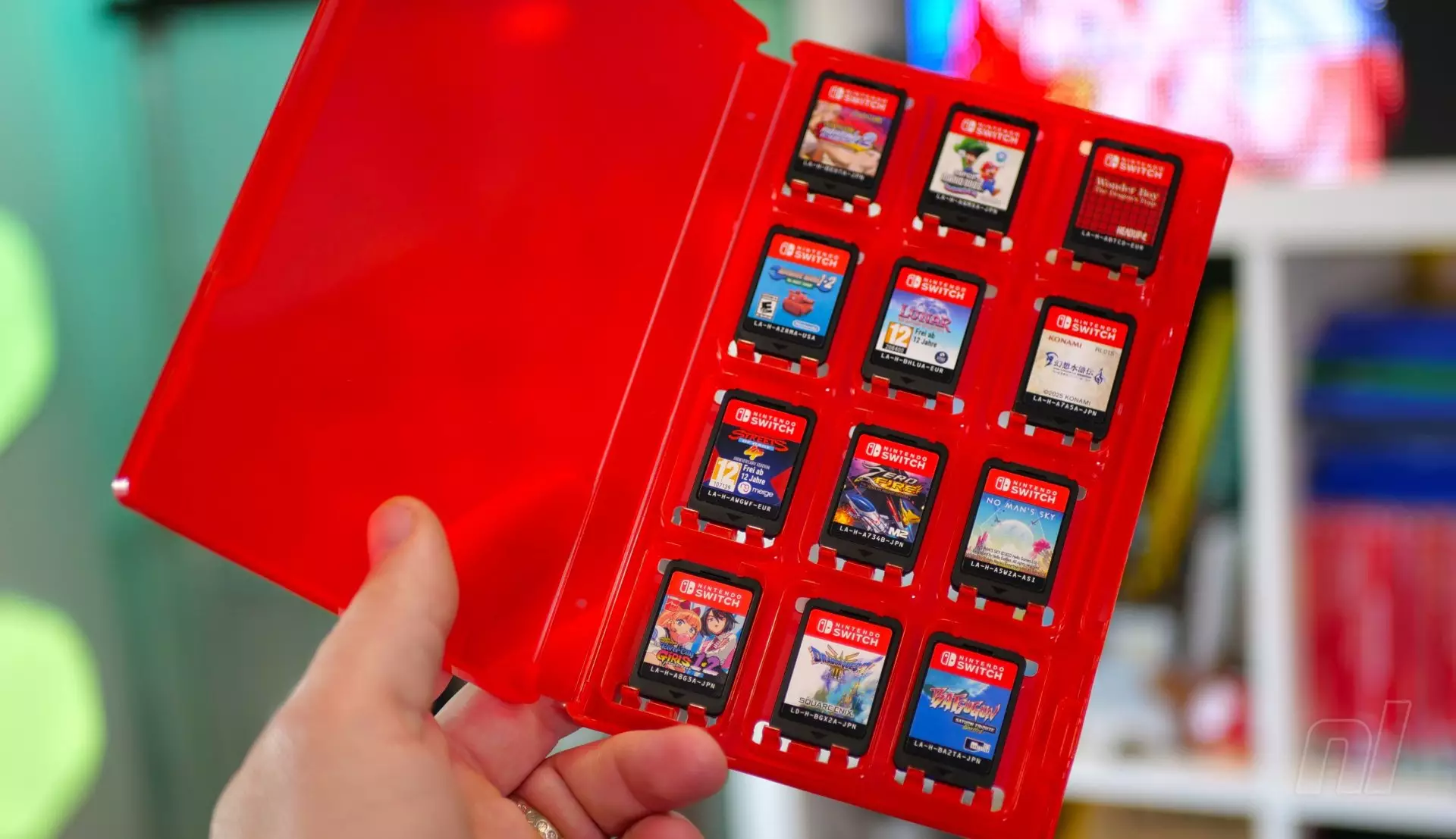In the vast and vibrant world of gaming accessories, innovation often walks a fine line between necessity and novelty. Genki, a company recently under scrutiny from Nintendo, has entered the fray with a product called the “Mimic Chest.” This trio of Switch 2-style storage cases aims to revolutionize how players organize their game cartridges, boasting the ability to store up to 36 games. While the concept seems appealing at first glance, a deeper examination reveals several underlying issues that must be addressed.
A Design Dilemma
At first sight, the Mimic Chest appears to be the ideal solution for players seeking an efficient way to manage their games. Each of the three cases emulates the look of standard Switch cases, making them visually cohesive when lined up on shelves. However, one major drawback quickly becomes apparent—there is no cover inlay. Genki has hinted at offering a DIY inlay print option in the future, but as it stands, gamers are left with bare cases that seem out of place next to their pristine game displays. It raises an immediate question: who wants to combine esthetics with functionality when the end result is a chaotic, disjointed collection?
This design oversight feels particularly ironic, as it transforms an otherwise sleek product into a patchwork of mismatched cases. For gamers who take pride in their collections, aesthetics matter, and Genki’s omission leaves room for disappointment.
Practicality vs. Portability
The size and sturdiness of these cases further complicate their utility. While they promise to hold a large number of cartridges, they come at the cost of portability. Unlike compact solutions like the Hori game card case, which can store 24 games without compromising on size or durability, the Mimic Chest’s bulking form factor might deter gamers from taking them on the go. Thus, if the goal is to provide a storage option that also facilitates travel, Genki misses the mark.
Moreover, the design itself is a potential logistical nightmare when actually put to use. Once you load up the Mimic Chest, the game cartridges do not fit snugly. Each cartridge rattles around, creating a cacophony when the case is moved, which not only diminishes the product’s value but also increases the likelihood of damaging the game cards. This excessive movement can lead to scratches and potential functional issues over time, further diminishing the longevity of the investment.
Functionality in Question
Ultimately, the question persists: is the Mimic Chest solving a real problem? Traditionally, gamers have gravitated toward keeping their carts in individual cases, identifying titles with ease during moments of urgency. The suggestion to consolidate cartridges into a single storage solution raises eyebrows. For those with a large collection, the potential to misplace games may heighten instead of reduce frustration. Storing all cartridges together may be convenient at first, but could easily transform into chaos when faced with the inevitable “Where is that one game I really want to play?”
There is a viable market for multi-game storage options, but this product may not satisfactorily meet that need. For an accessory labeled as innovative, it raises more questions than it answers. Gamers are often creatures of habit, and this new approach could disrupt the established and proven methodology of using individual cases.
A Price Tag on a Problematic Solution
At a retail price of $19.99, one could argue that the Mimic Chest is economically viable given its capacity. However, the trade-offs raise eyebrows. While some may find value in owning a comprehensive storage solution, others may deem it an unnecessary expense, especially when considering alternatives that offer better portability, sturdiness, and overall aesthetics.
The market for gaming accessories is ever-evolving, and players demand more than mere novelty—their needs hinge on efficiency and practicality. In its current form, Genki’s Mimic Chest might do more to clutter your gaming space rather than offer a streamlined solution. While the intent behind the product is commendable, it serves as a stark reminder that innovation alone is not sufficient; practicality and execution must also be paramount.

